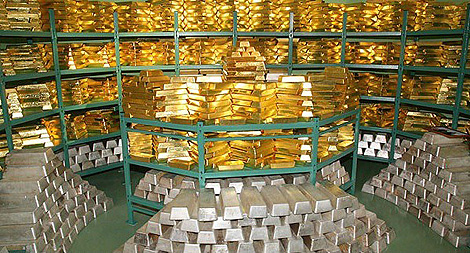Business news
Belarus’ gold and forex reserves projected at $7.3bn by late 2020

MINSK, 5 November (BelTA) – As of 1 January 2021, Belarus’ international reserve assets calculated according to the IMF methods should make up at least $7.3 billion. The decision is laid down in the country’s main monetary guidelines 2020 approved by President’s decree No.402 that was published on the national legal internet portal, BelTA has learned.
In order to improve the country's economic security and financial stability, the National Bank, together with the government, will continue to maintain the level of international reserve assets and improve their structure by repaying part of foreign exchange commitments through non-debt sources. The National Bank does not plan to attract external loans and credits.
On the broad money supply
Taking into account the need to ensure price stability, the growth of the average broad money supply is projected at the level of 8-11% (December 2020 to December 2019). Balanced growth of money supply will be facilitated by maintaining positive interest rates in the economy. The interest rate on one-day interbank loans in the national currency will remain as an operational benchmark for monetary policy, the fluctuations of which may be limited by the National Bank if needed.
The refinancing rate will continue to play a key role in regulating money supply in the economy.
As for currency circulation, the transition to a new system, when the collection, transportation and storage of cash will be performed by non-bank credit and financial organization Belinkasgroup, will continue in 2020. The move will make it possible to reduce the total expenditure of the National Bank and banks on servicing cash circulation, and to increase the efficiency of the banking system while the National Bank will stay in charge of centralized cash circulation.
On the exchange rate policy
The National Bank will continue its floating exchange rate policy, which means the use of foreign exchange interventions to smooth out sharp fluctuations of the Belarusian ruble. However, in order to reduce the level of the National Bank's participation in trading on the domestic foreign currency market, plans are in place to reduce the daily limit of interventions, expand the boundaries of the operational range and the neutral range. The National Bank will carry out operations to purchase foreign currency to replenish the gold and forex reserves only in case of stable excess of its supply over demand on the domestic foreign currency market.
On foreign currency liberalization
In 2020, foreign currency liberalization will continue to improve the investment climate and doing business conditions in Belarus, including the simplification of administrative procedures and the promotion of people’s business initiatives.
There are plans to develop a new legal framework to lift restrictions on resident individuals to conduct foreign currency transactions related to the movement of capital and on resident legal entities to open accounts outside Belarus, remove restrictions on the deadline to return foreign currency proceeds and their establishment in foreign trade agreements.
Measures are envisaged to improve the efficiency of control over compliance with the procedure for conducting foreign exchange transactions. A new system of foreign exchange monitoring will provide the National Bank with prompt and objective information on the state of the domestic foreign exchange market and will help control cash flows within foreign exchange transactions.
On bank deposits
The government and the National Bank will continue to create conditions for the safety and attractiveness of deposits on a long-term basis, primarily in the national currency. This will contribute to enhancing the stability of the banking system, ensuring the balance of assets and liabilities, and will be one of the factors for further de-dollarization of the country's economy.
The National Bank will encourage banks to build up their long-term resource base by attracting funds from individuals and legal entities and using these funds as an effective internal source of investment resources.
Investment banking will be further developed. Banks are expected to expand their brokerage and trust management services.
On lending
Belarus will create conditions for maintaining the pace of lending, including consumer loans. For example, plans are in place to create such legal conditions for mobile operators to provide loans to individuals.
The focus, however, will be on ensuring that the level of lending does not lead to an increase in systemic risks. For this purpose, it is planned to use debt load indicators, credit security indicators, and a system of measures based on the estimated value of the standard risk. Approaches to credit risk assessment will be further improved taking into account international standards. In 2020, considerable attention will be paid to keep the share of banks' unserviced assets in the assets subject to credit risk at a safe level not exceeding 10%.
On payment methods
In 2020, alternative methods of payment for goods and services using innovative convenient services will be developed. The move will make it possible to make payments directly from users' accounts to the accounts of trade (service) organizations and reduce the cost of payment services.
Plans are in place to give a boost to e-banking systems, introduce new safe and affordable digital banking technologies to provide financial services to banks' customers, encourage an active use of new types of payment instruments and means of payment, and provide 24/7/365 remote access to products and services.







 print version
print version make home page
make home page add to bookmarks
add to bookmarks

